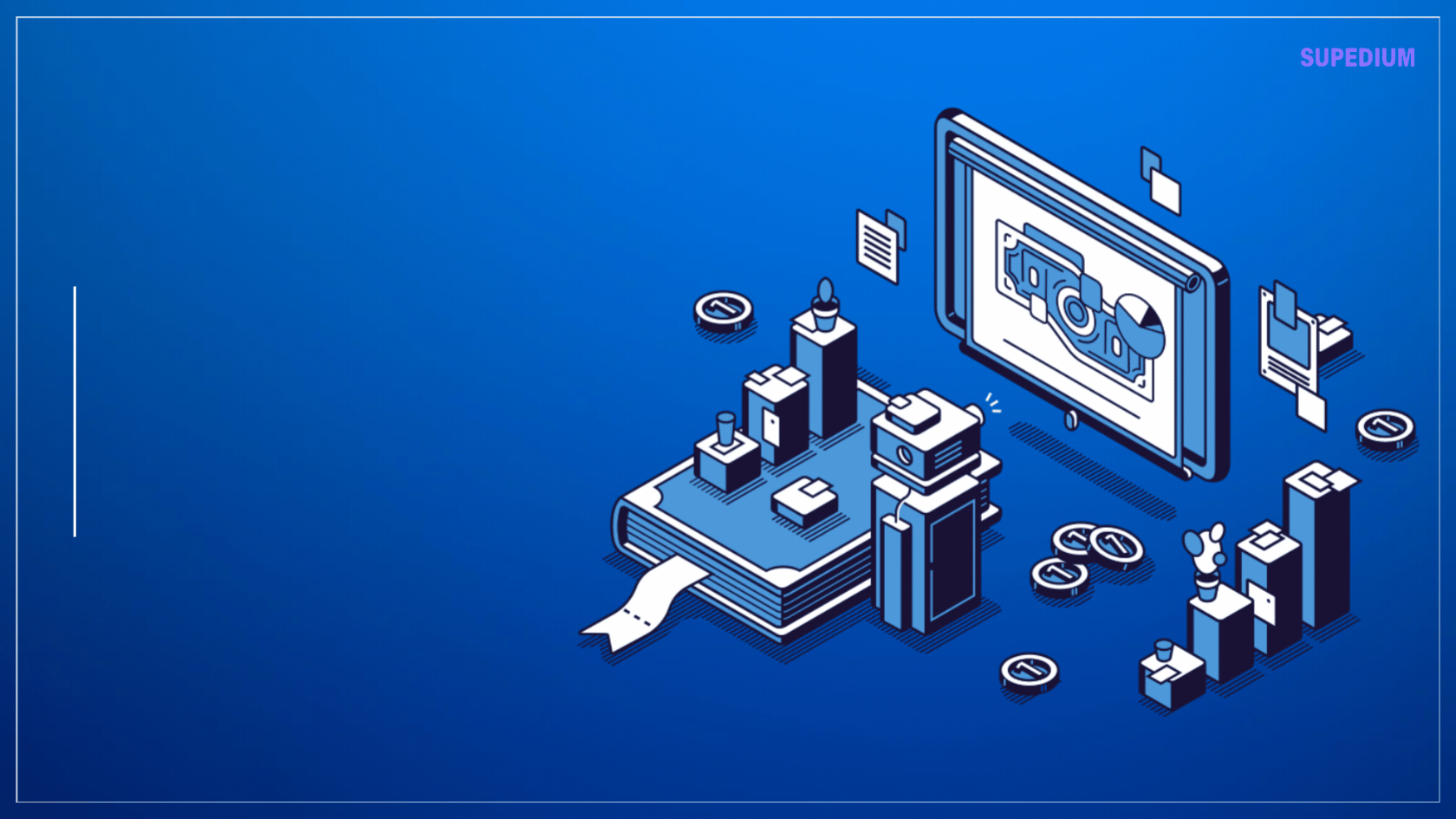Table of Contents
![]()
The evolution of the internet has been marked by significant transformations, and the shift from Web2 to Web3 represents one of the most profound changes. At the heart of Web3 is the concept of decentralization, which fundamentally alters how data, applications, and governance are handled online. This article provides an in-depth exploration of decentralization in Web3, its core components, and its implications for the digital landscape.
I. Introduction
A. Definition of Decentralization
Decentralization refers to the distribution of authority and control away from a central entity. In contrast to centralized systems, where a single authority holds power, decentralized systems distribute control across multiple participants. This approach enhances resilience, security, and transparency. Key characteristics of decentralization include distributed decision-making, reduced single points of failure, and increased user autonomy.
B. Overview of Web3
Web3 represents the next generation of the internet, transitioning from Web1’s static pages and Web2’s interactive, user-generated content platforms. Web3 is built on decentralized technologies and aims to create a more open, secure, and user-centric internet. Its core principles include decentralization, transparency, and user ownership.
C. Importance of Decentralization in Web3
Decentralization is pivotal in Web3 for several reasons:
- Enhanced Security: By distributing data and control, decentralized systems mitigate the risks associated with single points of failure.
- Greater User Control and Ownership: Users have more control over their data and digital assets, reducing reliance on intermediaries.
- Resistance to Censorship: Decentralized networks are less susceptible to censorship and control by any single authority, promoting free expression and access.
II. Core Components of Decentralization in Web3
A. Decentralized Networks
- Peer-to-Peer Networks: Decentralized networks rely on peer-to-peer (P2P) architectures, where participants interact directly without intermediaries. This structure enhances resilience and efficiency.
- Blockchain Technology: A foundational element of Web3, blockchain is a distributed ledger that records transactions across a network of computers. Each block in the chain is linked to the previous one, ensuring data integrity and transparency.
- Distributed Ledger Technology (DLT): Beyond blockchain, DLT encompasses various methods of distributing and managing data across multiple nodes, improving security and reducing fraud.
B. Decentralized Identity and Authentication
- Self-Sovereign Identity (SSI): SSI allows individuals to own and control their digital identities without relying on central authorities. Users manage their credentials and personal information, enhancing privacy and security.
- Decentralized Identifiers (DIDs): DIDs are a new type of identifier that enables verifiable, self-sovereign identities. Unlike traditional IDs, DIDs are not tied to any centralized registry.
- Verifiable Credentials: These are digital attestations issued by trusted parties that users can present to prove their identity or qualifications, enhancing trust and interoperability.
C. Decentralized Applications (dApps)
- Structure and Function of dApps: dApps operate on decentralized networks, utilizing smart contracts to automate and enforce transactions and rules. They offer transparency and resistance to censorship.
- Smart Contracts and Their Role: Smart contracts are self-executing agreements with the terms of the contract written into code. They automatically enforce and execute contract terms, reducing the need for intermediaries.
- Examples of Popular dApps: Examples include decentralized finance (DeFi) platforms like Uniswap and decentralized social networks like Mastodon, which leverage decentralized infrastructure to provide innovative services.
III. Decentralized Governance
A. DAO (Decentralized Autonomous Organizations)
- Definition and Function: DAOs are organizations governed by smart contracts and decentralized voting systems. They operate without central leadership, with decisions made collectively by token holders or members.
- Governance Mechanisms: DAOs use mechanisms such as token-based voting, proposal systems, and decentralized decision-making processes to manage and direct organizational activities.
- Examples and Case Studies: Notable DAOs include MakerDAO, which governs the DAI stablecoin, and DAOstack, which provides a platform for building and managing DAOs.
B. Community and Stakeholder Involvement
- Incentives for Participation: Participants in decentralized systems are often incentivized through tokens or other rewards. This encourages active involvement and contribution to the network.
- Mechanisms for Decision-Making: Decision-making in decentralized systems can involve voting, consensus mechanisms, and community proposals, allowing diverse input and participation.
C. Challenges and Solutions
- Scalability: Decentralized systems face challenges in scaling to handle large volumes of transactions. Solutions include layer-2 scaling technologies and improved consensus algorithms.
- Coordination and Consensus: Achieving consensus and coordinating actions among distributed participants can be complex. Innovations such as sharding and improved governance models are being developed to address these issues.
IV. Decentralization and Economic Models
A. Tokenomics
- Types of Tokens: Tokens in Web3 can serve various purposes, including utility (providing access to services), security (representing ownership or investment), and governance (enabling participation in decision-making).
- Role in Decentralized Ecosystems: Tokens facilitate transactions, incentivize behavior, and enable governance within decentralized networks, playing a crucial role in their functioning.
B. Decentralized Finance (DeFi)
- Overview of DeFi: DeFi refers to financial services built on decentralized networks, offering alternatives to traditional banking and financial systems.
- Key DeFi Applications and Platforms: DeFi applications include decentralized exchanges (DEXs), lending platforms, and stablecoins. Examples are Aave, Compound, and Uniswap.
- Risks and Benefits: While DeFi offers increased accessibility and innovation, it also presents risks such as smart contract vulnerabilities and market volatility.
C. Impact on Traditional Financial Systems
- Disruption of Traditional Banking: DeFi challenges traditional financial institutions by offering decentralized alternatives for lending, borrowing, and trading, potentially reducing reliance on centralized intermediaries.
- Integration with Existing Financial Infrastructure: Some traditional financial institutions are exploring ways to integrate DeFi and blockchain technologies, bridging the gap between legacy systems and emerging innovations.
V. Security and Privacy
A. Advantages of Decentralization in Security
- Resistance to Single Points of Failure: Decentralized systems are less vulnerable to attacks that target central points of control, enhancing overall security.
- Enhanced Privacy Through Encryption: Decentralized networks often employ encryption to protect data, ensuring that personal information remains secure and private.
B. Privacy Issues and Solutions
- Data Ownership and Control: Decentralization empowers individuals to own and control their data, reducing reliance on centralized entities that may exploit or misuse personal information.
- Privacy-Preserving Technologies: Innovations such as zero-knowledge proofs and secure multi-party computation enhance privacy by allowing verification without revealing sensitive information.
C. Common Threats and Vulnerabilities
- Smart Contract Vulnerabilities: Smart contracts, while powerful, can be prone to bugs and vulnerabilities that may be exploited by malicious actors. Rigorous testing and code audits are essential for security.
- Sybil Attacks and Other Network Attacks: Sybil attacks, where an attacker creates multiple fake identities to gain influence, and other network attacks can undermine decentralized systems. Mitigation strategies include reputation systems and proof-of-stake mechanisms.
VI. Use Cases and Applications
A. Social Media and Content Platforms
- Decentralized Social Networks: Platforms like Mastodon and Diaspora offer decentralized alternatives to traditional social media, giving users more control over their data and content.
- Content Monetization and Ownership: Web3 enables new models for content creation and monetization, where creators retain ownership and receive direct compensation through tokens or other mechanisms.
B. Supply Chain Management
- Traceability and Transparency: Blockchain technology enhances supply chain management by providing transparent and immutable records of transactions, improving traceability and accountability.
- Examples of Blockchain in Supply Chains: Companies like IBM and VeChain are using blockchain to track and verify supply chain processes, reducing fraud and improving efficiency.
C. Healthcare and Personal Data
- Patient Data Management: Decentralized systems can improve patient data management by providing secure, interoperable platforms for sharing medical records and ensuring data privacy.
- Interoperability and Data Sharing: Web3 technologies facilitate seamless data sharing across different healthcare systems, enhancing coordination and patient care.
VII. Challenges and Future Directions
A. Technological and Infrastructure Challenges
- Scalability Issues: Decentralized systems must address scalability challenges to handle increasing transaction volumes and user growth. Solutions include layer-2 scaling and improved consensus mechanisms.
- Interoperability Between Networks: Ensuring interoperability between different decentralized networks is crucial for creating a cohesive Web3 ecosystem. Efforts are underway to develop cross-chain protocols and standards.
B. Regulatory and Legal Considerations
- Legal Status of Decentralized Entities: The legal status of decentralized organizations and technologies remains uncertain in many jurisdictions. Ongoing discussions and regulatory developments will shape the future of Web3.
- Compliance and Regulation: Balancing innovation with regulatory compliance is essential for the sustainable growth of decentralized technologies. Regulators are working to develop frameworks that address emerging challenges while fostering innovation.
C. Future Trends and Innovations
- Integration with Emerging Technologies: Web3 is likely to integrate with other emerging technologies, such as artificial intelligence (AI) and the Internet of Things (IoT), creating new opportunities and applications.
- Potential for Broader Adoption: As Web3 technologies mature and overcome current challenges, their adoption is expected to grow, reshaping various industries and aspects of daily life.
VIII. Conclusion
Decentralization is a fundamental aspect of Web3, driving the evolution of the internet towards a more open, secure, and user-centric paradigm. By distributing control, enhancing transparency, and empowering users, decentralization promises to address many of the limitations of traditional, centralized systems. As Web3 continues to develop, it will play a crucial role in shaping the future of the digital world, offering new possibilities for innovation, governance, and economic models. The journey towards a fully decentralized internet is ongoing, and its impact will be felt across various domains, transforming how we interact, transact, and govern in the digital age.
Share This





Be the first to comment